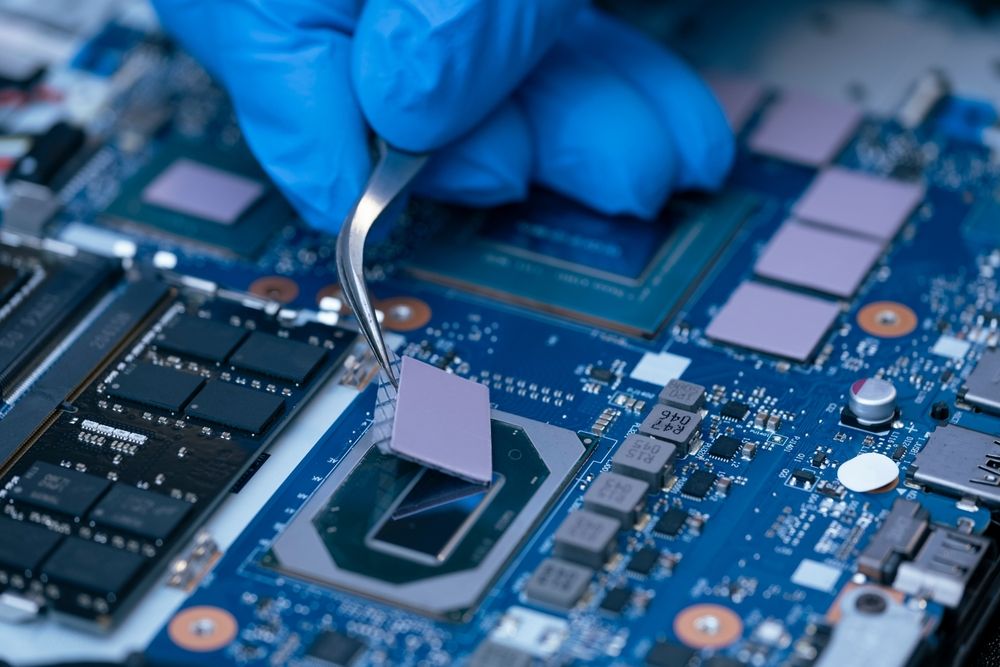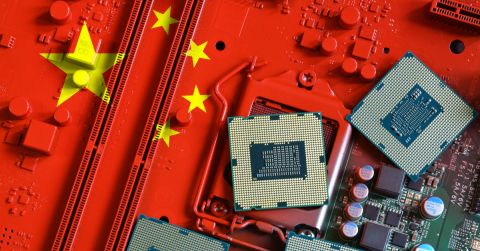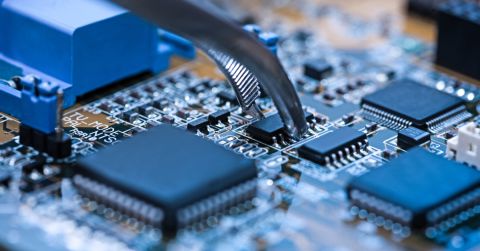10 Top Components for Thermal Management in High-Performance Electronics

Modern electronics run hotter than ever. From AI datacenters and electric vehicles to smartphones and medical wearables, today’s devices push serious power through smaller footprints. And when the heat builds up, performance, safety, and reliability are all on the line.
For today’s high-performance electronics, thermal management is often the make-or-break factor that separates products that thrive from those that throttle. Fortunately, engineers now have access to an impressive arsenal of components specifically engineered to move, spread, or monitor heat with remarkable precision. Whether you’re optimizing a power board or designing the next breakthrough wearable, the right thermal components can help maintain peak performance and extend product life under demanding conditions.
Here are ten standout components that engineers are currently using to manage heat and build smarter, more resilient electronics.
1. Laird Tflex HD300: Filling the Gaps with Power and Flexibility
Thermal interface materials (TIMs) are the quiet workhorses of thermal management. Laird’s Tflex HD300 series offers a high-performance, soft gap filler that conforms easily between surfaces while delivering excellent thermal conductivity of around 2.7 W/m·K. This allows it to transfer heat from components – such as processors or power modules – directly to the chassis walls or cold plates without introducing mechanical stress.
Commonly used for tight assemblies in EVs, telecom infrastructure, and aerospace gear, this material excels at bridging gaps in uneven topographies, ensuring thermal efficiency in complex designs.
2. Boyd Heat Sinks: Classic Cooling, Engineered to Perform
Sometimes the most reliable tools are also the most familiar. Boyd’s extruded aluminum heat sinks are a staple for passive cooling in power supplies, lighting modules, and embedded boards.
Often paired with thermal pads or pastes to improve contact, and available in various profiles with clip-on fan mounting options, they offer an efficient and affordable solution for power-dense designs where forced airflow is viable.
3. Vicor Power-on-Package (PoP): Power Density Meets Smart Thermal Design
Power electronics generate a lot of heat, particularly in high-efficiency, high-current systems. Vicor’s Power-on-Package (PoP) modules tackle this head-on. These compact DC-DC converters integrate thermal pathways directly into the housing, allowing heat to spread internally before reaching the PCB.
Used in AI accelerators, avionics, and industrial robotics, PoP modules are designed with cooling in mind, without compromising power density or electrical performance.
4. TI TMP119: Precision Thermal Monitoring in a Tiny Package
While most thermal components focus on transferring heat, monitoring temperature is equally important. That's where precision sensors come into the picture. Texas Instruments’ TMP119 is a digital temperature sensor with ±0.08 °C accuracy. It’s small, low-power, and ideal for thermal feedback loops in datacenters, medical devices, and consumer wearables.
With I²C and SMBus compatibility, it integrates easily into embedded systems, helping designers implement proactive thermal control strategies that kick in before temperatures become a problem.
5. Ferrotec Thermoelectric Coolers: Compact Heat Movers
Ferrotec’s thermoelectric modules (often called Peltier coolers) actively move heat using electrical current. These devices can be used in both cooling and heating modes, making them well-suited for space-constrained environments where reliability is essential, such as infrared sensors, laser drivers, and rugged outdoor electronics.
For optimal performance, ferrotec thermoelectric coolers need to be paired with heat sinks or spreaders.
6. ON Semiconductor FAN48623: Compact Boost Power for Thermal Systems
The FAN48623 is a compact, efficient boost regulator designed to power control circuits for fans, sensors, and other temperature-responsive components. It delivers up to 2500 mA of output current with efficiencies up to 97%, and supports designs using thermal feedback logic or external fan driver ICs.
Its small form factor and low quiescent current make it a strong choice for smart thermal subsystems in notebooks, handhelds, and wearables.
7. Infineon OptiMOS™ 7: Power and Packaging in Sync
MOSFETs are essential for switching power and managing heat, particularly in high-current applications. Infineon's OptiMOS™ 7 series takes thermal management to the next level with application-specific optimization and topology-aware design, ensuring maximum performance in both hard-switching and soft-switching scenarios.
The series features advanced source-down packaging with dual-side cooling, coupled with a +175°C junction temperature rating. This design ensures that heat is effectively dissipated, even under high load conditions.
Specifically designed for high-performance systems like datacenter power supplies, AI accelerators, and high-frequency telecom infrastructure, OptiMOS™ 7 offers unparalleled switching efficiency. With optimized Miller ratios and ultra-low RDS(on) at elevated temperatures, these MOSFETs enable higher power densities while minimizing thermal design complexity.
8. Cree XLamp High-Current LEDs: Lighting Up Without Heating Up
High-power LEDs get hot, fast. Cree’s XLamp family tackles this with built-in ceramic substrates and optimized internal vias that channel heat away from the junction. These features allow designers to drive more current while maintaining color stability and lifespan.
You’ll find these LEDs in places where brightness and thermal performance are equally important, including stadium lighting, smart city fixtures, and high-end automotive headlamps.
9. Henkel BERGQUIST Liqui-Form TLF: Thermal Gel That Pours Heat with Precision
Liqui-Form TLF gels, such as TLF 3800LVO and TLF 6000HG, provide exceptional thermal conductivity up to 6.0 W/m·K. Ideal for RF power amplifiers, telecom infrastructure, and 5G base stations, they simplify assembly while ensuring superior thermal performance.
They conform to irregular surfaces, minimize mechanical stress during assembly, and offer excellent reworkability and long-term thermal cycling reliability without complicating the manufacturing process.
10. Panasonic PGS (Pyrolytic Graphite Sheets): The Ultra-Thin Heat Spreader
Used in smartphones, tablets, and foldable wearables, Panasonic’s EYG series delivers up to 1950 W/m·K of in-plane conductivity, providing an ultra-thin, passive solution for heat transfer without adding bulk.
PGS acts like an invisible heat highway, redistributing energy from hot spots to cooler areas, such as chassis walls or display frames. It’s reliable and plays nicely with modern materials and flexible PCBs.
Putting it All Together and Sourcing Smart
As electronic systems continue to evolve, managing thermal performance is becoming as important as electrical specs and signal integrity. Whether you're designing for mission-critical performance or handheld convenience, thermal management is now a strategic priority. It's your opportunity to push boundaries, extend product lifespans, and deliver systems that perform exactly as promised.
When looking for the latest thermal management components and advanced materials for your next design, start your search on Octopart, where you’ll find up-to-date pricing, availability, and technical specifications on over 32 million parts from hundreds of distributors. Whether you're building a complete BOM or tracking down hard-to-find components, Octopart's intelligent matching algorithms and powerful BOM Tool can streamline your procurement process. From concept to production, Octopart helps you source smarter and build cooler.











